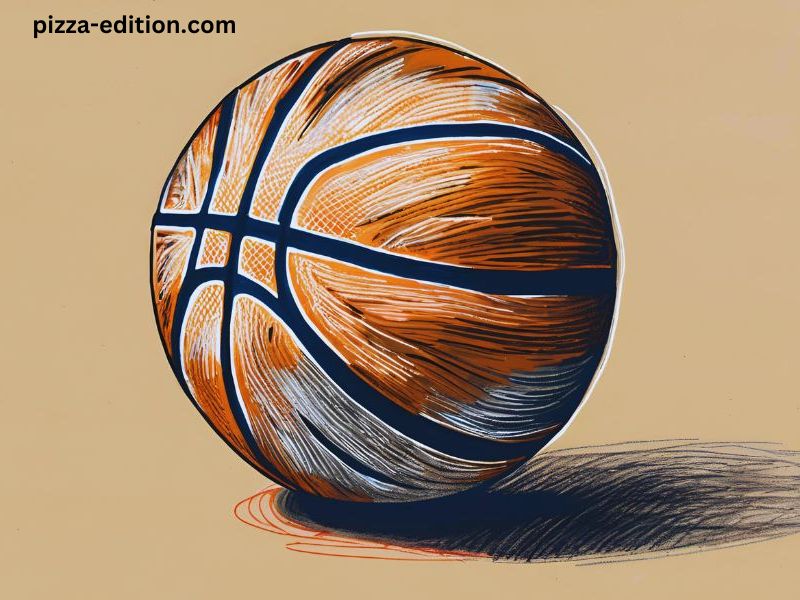Basketball is a dynamic sport that combines athleticism, strategy, and artistry. While the game itself is often celebrated for its fast pace and physical demands, there is a less visible but equally important element: the art of drawing. Whether it’s the intricate plays designed by coaches or the fluid movements of players, drawing in basketball encompasses various aspects, from tactical designs to the emotional expression of the game.
The Fundamentals of Drawing in Basketball
At its core, drawing in basketball can be divided into two primary categories: tactical drawing and artistic drawing.
- Tactical Drawing: This involves creating diagrams and plays that outline strategies for offensive and defensive maneuvers. Coaches use tactical drawings to communicate complex strategies to players. These diagrams often represent player positions, movements, and intended actions on the court.
- Artistic Drawing: This aspect focuses on capturing the essence of basketball through sketches, illustrations, and even digital art. Artists aim to portray the emotions, athleticism, and culture surrounding the sport, providing a visual representation of the game’s impact on individuals and communities.
Tactical Drawing in Basketball
Play Diagrams
In basketball, plays are often diagrammed using standard symbols to represent players and ball movements. Here’s a closer look at how this is done:
- Court Layout: The court is usually represented as a rectangle divided into key areas: the three-point line, free-throw line, and paint. Coaches typically use a top-down view for clarity.
- Player Symbols: Each player is represented by a symbol, often a circle or a square. The offensive team might be denoted in one color (e.g., blue) while the defensive team is shown in another (e.g., red).
- Movement Arrows: Arrows indicate player movements, dribbles, and passing routes. Different styles of arrows can represent various types of movement (e.g., dashed lines for cuts).
Play Types
There are several common types of plays that coaches might draw up:
- Isolation Plays: These are designed to create one-on-one situations, allowing a skilled player to exploit a defensive matchup.
- Pick and Roll: This classic play involves one player setting a screen for another, creating space for a shot or driving lane.
- Fast Break: Drawn up for quick transitions after a defensive rebound, emphasizing speed and teamwork.
The Importance of Tactical Drawing
Tactical drawings serve several purposes in basketball:
- Communication: They provide a clear method for coaches to convey their vision and strategies to players, ensuring everyone is on the same page.
- Preparation: Players can study these diagrams to understand their roles in different situations, improving their readiness for games.
- Analysis: Coaches often review game footage alongside tactical drawings to analyze what worked, what didn’t, and how strategies can be adjusted for future games.
Artistic Drawing in Basketball
While tactical drawings focus on strategy, artistic drawings celebrate the sport’s emotional and cultural significance.
Capturing Movement
Artists often strive to capture the dynamic movements of basketball players in action. Techniques used may include:
- Line Work: Using fluid lines to depict movement and speed, capturing the energy of a player driving to the basket.
- Gestural Drawing: Quick sketches that focus on the essence of movement rather than precise details, often used in live sketches during games.
Emotional Expression
Basketball is not just about physical skill; it also evokes strong emotions. Artists may focus on:
- Facial Expressions: Capturing the determination, joy, and intensity of players during pivotal moments.
- Crowd Reactions: Illustrating the electric atmosphere of a game, where fans play an integral role in the experience.
Cultural Impact of Basketball Art
Basketball has a profound cultural impact that extends beyond the court. Artists often explore themes such as:
- Identity and Community: Many artists draw from their personal experiences with basketball, reflecting on how the sport shapes community bonds and individual identity.
- Social Issues: Some artworks address broader social themes, such as inequality, through the lens of basketball, using the sport as a metaphor for larger societal dynamics.
The Intersection of Tactical and Artistic Drawing
While tactical and artistic drawing may seem distinct, they often intersect in meaningful ways. For instance:
- Playbooks as Art: Some coaches create visually appealing playbooks that blend tactical diagrams with artistic elements, making them not only functional but also visually engaging.
- Merchandise Design: Team merchandise, like jerseys and promotional materials, often incorporates artistic elements that reflect both the team’s identity and the sport’s cultural significance.
Techniques for Aspiring Basketball Artists
For those looking to delve into the world of basketball drawing, here are some tips:
- Study the Game: Understanding the rules, strategies, and movements will enhance your ability to draw them accurately.
- Attend Games: Live games provide inspiration and an opportunity to capture the spontaneity of the sport.
- Experiment with Mediums: Try various mediums—pencil, ink, digital—to find what best captures your artistic vision.
- Join a Community: Engaging with fellow artists and basketball enthusiasts can provide valuable feedback and inspiration.
Conclusion
Drawing in basketball is a multifaceted art that combines tactical precision with emotional expression. Whether it’s a coach diagramming a play or an artist capturing the energy of a game, drawing serves as a vital tool for communication, creativity, and cultural reflection. As basketball continues to evolve, so too will the ways in which it is drawn and represented, ensuring that the artistry of the game remains a vibrant part of its legacy.
In a world where visuals play an increasingly important role, the ability to effectively draw basketball—both tactically and artistically—can enrich the experience for players, coaches, fans, and artists alike. The next time you watch a game, take a moment to appreciate the artistry involved, both on and off the court.


